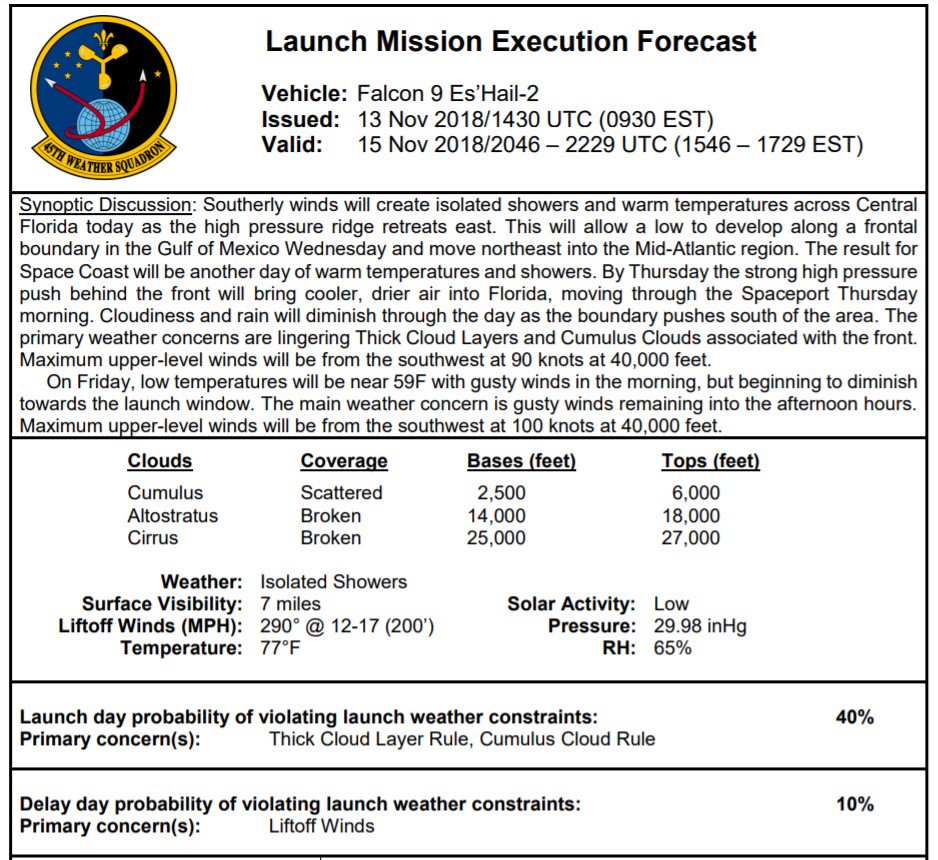Launch Date: November 15
Launch Window: 2046-2227 GMT (3:46-5:27 p.m. EST)
Launch site: LC-39A, Cape Canaveral, Florida
Booster Recovery: ASDS - OCISLY
Booster Type: B1047.2 - Reused from Telstar 19V
Mass: 3000 kg
Orbit: GTO
A SpaceX Falcon 9 rocket will launch the Es’hail 2 communications satellite. Built by Mitsubishi Electric Corp. and owned by Qatar’s national satellite communications company Es’hailSat, Es’hail 2 will provide television broadcasts, broadband connectivity and government services to Qatar and neighboring parts of the Middle East, North Africa and Europe. Es’hail 2 also carries the first amateur radio payload to fly in geostationary orbit.
Es'hail 2
Es’hail 2
18th SpaceX launch of the year.
7th drone ship landing of the year.
If successful, this will be the 31st recovered booster.
There have been 8 new boosters used and 9 reused boosters flown this year.
Launch Window: 2046-2227 GMT (3:46-5:27 p.m. EST)
Launch site: LC-39A, Cape Canaveral, Florida
Booster Recovery: ASDS - OCISLY
Booster Type: B1047.2 - Reused from Telstar 19V
Mass: 3000 kg
Orbit: GTO
A SpaceX Falcon 9 rocket will launch the Es’hail 2 communications satellite. Built by Mitsubishi Electric Corp. and owned by Qatar’s national satellite communications company Es’hailSat, Es’hail 2 will provide television broadcasts, broadband connectivity and government services to Qatar and neighboring parts of the Middle East, North Africa and Europe. Es’hail 2 also carries the first amateur radio payload to fly in geostationary orbit.
Es'hail 2
Es’hail 2
18th SpaceX launch of the year.
7th drone ship landing of the year.
If successful, this will be the 31st recovered booster.
There have been 8 new boosters used and 9 reused boosters flown this year.




